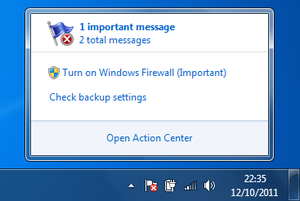
Tabworks 2 0 Xerox Jobs. 1/1/2018 0 Comments In the last month we have been increasingly experiencing issues where the tab key and function keys stop working in.
I had the opportunity last week in Chicago to conduct a logo recognition test as an exercise to kick off a branding session with a group of business executives. Among the 50 or so logos appearing on the test, the two you see below were included. Everyone in the room immediately recognized the logo on the right. Hpfmom09.hlp Driver. No one could name the company who used the logo on the left.
That was surprising to me, as these were business executives well versed in office technology. The logos, while similar–an X emblazoned on a sphere–are certainly distinct enough not be confused, but one enjoyed universal recognition in the group and the other complete disconnection.
Well, if you haven’t guessed, the logos above are those, respectively, of the Xerox Corporation and Microsoft’s Xbox 360 game platform. What’s odd is that Xerox is a $17 billion company and Xbox is a $3 billion dollar product.
You’d think Xerox’s identity would be the more recognized one with this audience of business professionals. But it wasn’t. There are a few reasons for this, and it all gets to the heart of branding. If you could reduce brand identity to a formula, it would be this: UNIQUENESS + CONSISTENCY + FREQUENCY Xerox loses to Xbox on all three. Hp Dmi Editor Tool more. By the time Xerox rolled out its new visual identity a couple years ago, it was a little late to be doing spheres with swooshes. Virtually every possible permutation of that had been done by design shops big and small. So much for UNIQUENESS.
Changing logos can be a positive step forward for a company’s brand, but Xerox seems to have done this more than most corporations its size. So much for CONSISTENCY.
And when it comes to FREQUENCY, the greater recognition of the Xbox logo just goes to show that people–even busy business executives–are still greatly influenced by television where most Xbox ads are found. Add to television the point-of-purchase displays and cool packaging at thousands of retail outlets, as well as banner ads and Internet commercials, and all of a sudden you have some serious FREQUENCY. FREQUENCY is, of course, the most expensive part of brand identity. Ask Geico: they recently passed the $1 billion (yes, “billion” with a “B”) ad spending threshhold convincing you that 15 minutes could save you 15% or more on car insurance. So how do mid-size companies that don’t have a billion dollars to spend on advertising proceed in all this? What’s the Xerox-Xbox lesson?
Well, back to our brand formula, CONSISTENCY is just a matter of discipline as long as someone serves as brand steward and keeps things consistent. The real leverage is with UNIQUENESS. It’s the most compelling aspect of the brand formula and costs a fraction of the FREQUENCY piece of the puzzle. In fact, a well-differentiated, unique brand profile makes every FREQUENCY dollar go farther. That’s why it’s always worth the effort to study what makes an organization unique / better / different / special compared to competitors before launching out with any major marketing effort.
It is in that open-ended discovery process, interviewing stakeholders and probing for what’s most compelling that great brands are born (or re-born). It’s probably the most rewarding part of our work with clients, because once discovered, it is the brand’s unique qualities that make every strategy and tactic more authentic and more effective.
Microsoft Windows Revision history 11:49, 22 Mar 2004.. Monedula (add Windows logo (will be correctly displayed only on windows computers)) So why bother? 19:59, 22 Mar 2004 (UTC) Removed, for same reason. If anybody really wants the Windows® logo on this page, they can go get an image. -- 02:36, Mar 23, 2004 (UTC) Uncategorized Things Too detailed to go in the main article, I think, but it's worth pasting this citation in here to remind editors that the MS security issues are real and public: • Speaking at a.NET developers conference, held in Seattle on September 5th, 2002, Brian Valentine, Microsoft's SVP for Windows development, admitted 'We really haven't done everything we could to protect our customers.